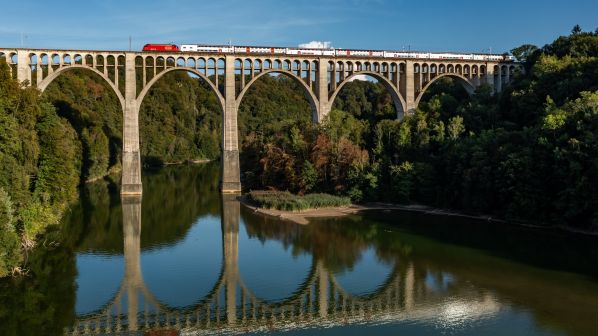THE Swiss Parliament has approved an increase of around SFr 3bn ($US 3.31bn) in budget and the addition of several new projects under the 2025-2035 railway expansion programme.
The funding increase takes the total value of the investment programme to SFr 23bn. Parliament originally approved a SFr 6.4bn expansion of railway infrastructure, the 2025 programme, in 2013. This was expanded by an additional SFr 12.9bn in 2019, with the scope of the programme increased to 2035.
However, the government says it is clear that additional financial resources and infrastructure improvements are necessary. Proposals were submitted by the Federal Council to the Parliament last summer, with both the lower and upper houses approving these with a large majority.
The projects approved by the Federal Council include:
- full track doubling of the Lötschberg base tunnel (instead of partial expansion)
- construction of a new Morges - Perroy Tunnel on the Lausanne - Geneva main line, instead of a surface expansion
- additional funding for the Brüttener tunnel, Zimmerberg tunnel and Stadelhofen station projects
- expansion of station facilities at Olten station
- increased federal funding for the Geneva underground station project, and
- design of the 21.8km Grimsel single bore, 1000mm-gauge tunnel between Innertkirchen and Oberwald.
Further measures approved by Parliament are:
- further planning to separate traffic at Pratteln
- expansion of Ebikon station and the addition of a new station at Basel-Morgartenring
- preliminary studies for a bypass near Bussigny on the Glovelier - Delémont line and project planning for double-track expansion at Tiefenwinkel (Walensee)
- advance works on the Zimmerberg tunnel at Meilibach, and
- measures to reduce the negative effects of the 2025 timetable in western Switzerland.
Railway Perspective 2050
The Parliament has also approved the Railway Perspective 2050 strategy. The strategy does not include any specific projects but rather offers guidance for upcoming rail infrastructure investment programmes, which it says should focus on strengthening rail infrastructure in and around urban areas, including more S-Bahn services and station improvements. There is also an emphasis on the further development of long-distance and cross-border rail services to better compete with air and road. For freight, the strategy states that new freight handling and urban logistics facilities should be constructed.
“In the future, the more intensive use of the existing network will take priority over further infrastructure expansion,” the strategy states. “The potential of technological development must be exploited. Where bottlenecks are foreseeable due to the desired modal shift, capacities in both passenger and freight transport should be expanded.”

